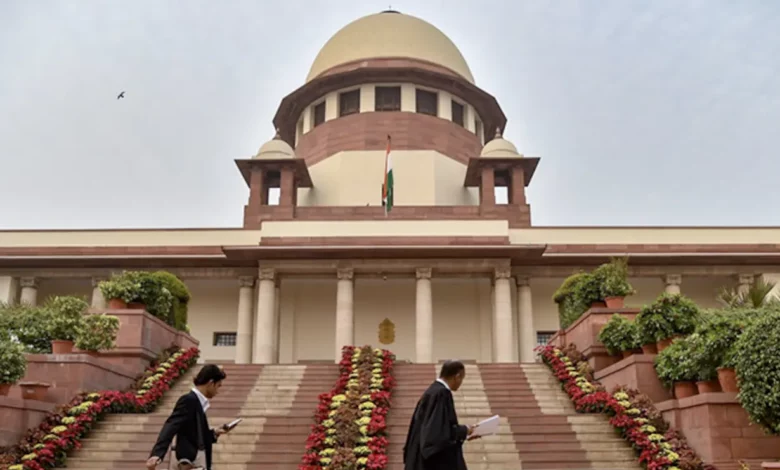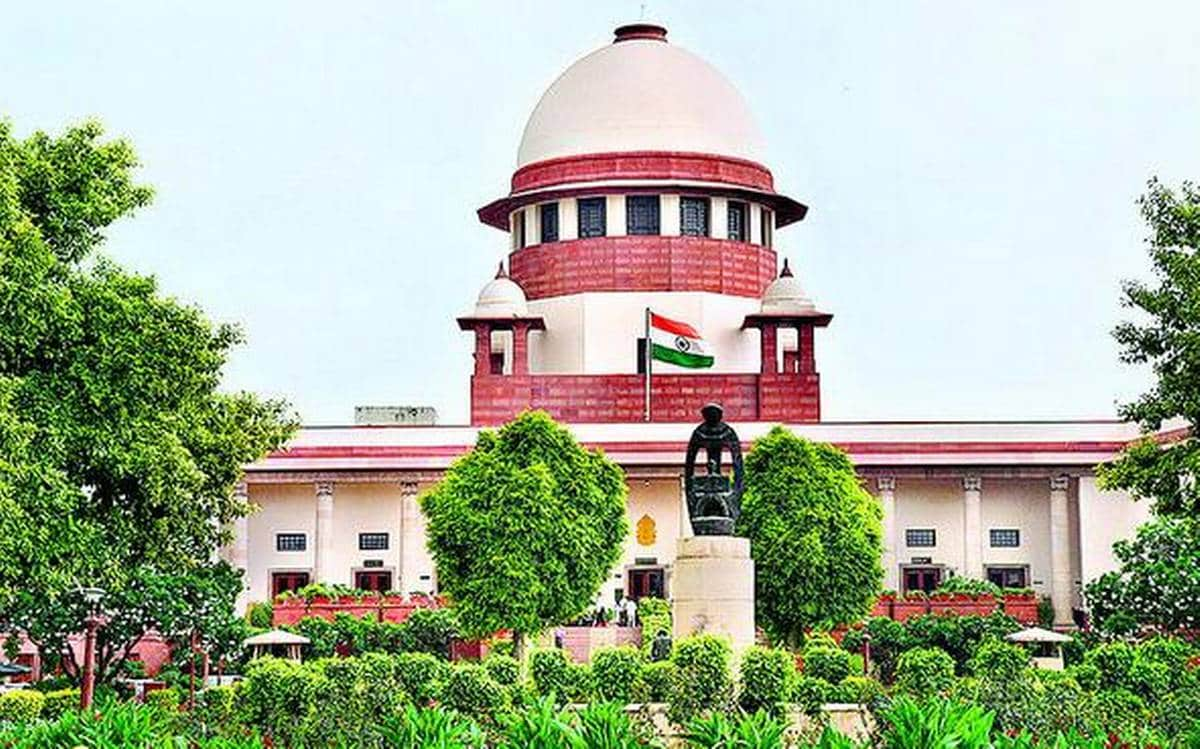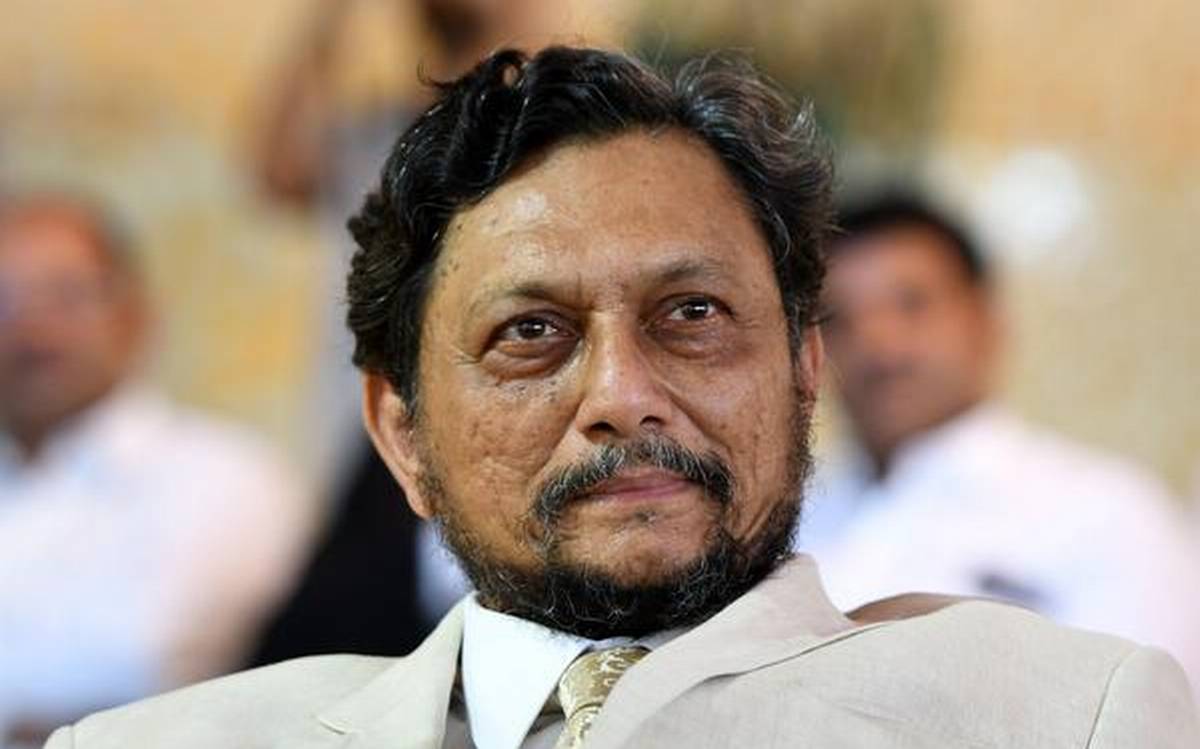“dismissed”: supreme court won’t share details of judges’ appointment meet

Supreme Court Stand on judges’ appointment meet

The Supreme Court denied information on a session of its top committee for appointing justices today, stating that the public cannot be informed of these talks.
“Anything discussed (during collegium sessions) is not allowed to be made public. Only the ultimate verdict needs to be posted unless a substantial decision is made during the resolution is adopted “explained the Supreme Court.
Records of a Collegium conference on the nomination of two justices on Dec 12, 2018, that were never made public, were requested in a petition. The Right to Information Act request for the information was refused, and the applicant, activist Anjali Bhardwaj, disputed the ruling.
The judges stated that no judgment was made at the meeting and pointed out that the applicant had “relied on publications” based on conversations that one of the justices presented. “We don’t want to make any comments on that. The answer that followed was obvious. The petition should be rejected because it lacks substance “The Supreme Court concluded.

In the aforementioned meeting, Justices Madan B. Lokur, AK Sikri, SA Bobde, and NV Ramana, together with then-Chairman of the Supreme Court Ranjan Gogoi, made certain decisions about the promotion of justices to the Supreme Court. The Supreme Court site does not have the meeting’s specifics posted.
The decision of the Supreme Court was later overturned
After a new collegium was established in Justice Lokur’s retirement, two of the candidates for the Supreme Court are said to have been pulled. This collegium decided to “reconsider” the prior suggestions during a meeting on Jan 10.
In January 2019, Justice Lokur expressed concern that the meeting’s resolution had not been posted online.
Attorney Prashant Bhushan argued against the exclusion of the collegium’s rulings from RTI in support of the petition. “Aren’t the citizens of the nation entitled to know? It is a fundamental right, according to the court. The Supreme Court is changing its position now.
The acrimonious back-and-forth between the court over judge selections is exacerbated by the Supreme Court’s steadfast unwillingness to make collegium deliberations public.
A week earlier, the Supreme Court advised against “sidetracking the collegium system” based on the claims of “some busybody” when hearing the petition, claiming that the high court is one of the most open institutions in the nation.
“Commenting on past decisions (of the commission) made while they (former justices) were members of the collegium has become fashionable in modern times. We don’t wish to comment on their remarks “stated Justices CT Ravikumar and MR Shah.
Yesterday, the Supreme Court responded angrily to Vice President Jagdeep Dhankhar’s statement in the Rajya Sabha over the appointment of justices. “High-ranking constitutional officials shouldn’t make public comments about the Supreme Court Governing council in their speeches. You must counsel them, “The court stated.
According to the Supreme Court, the Collegium structure is indeed the “laws of the land” and ought to be “respected to the teeth.” The justices argued that the Collegium system will continue to be the rule of the nation notwithstanding the opinions of various social groups.
In his remarks, Mr. Dhankhar discussed the National Judicial Appointments Commission (NJAC), a statute regulating judicial nominations that was later repealed and which allowed the government a say in judicial appointments.
The appointment of judges has been the purview of the Supreme Court Governing council until 1991, although several central ministers, both current and previous, have advocated that the government plays a part in the process.
What is Supreme Court’s Collegium system?
One of the key concepts in comprehending the selection of Supreme Court judicial system is the Supreme Court’s Collegium System. Instead of being established by a law passed by a parliament or a clause in the constitution, the system for appointing and transferring justices has developed as a result of Supreme Court decisions.
The Supreme Court’s Collegium System is presided over by the CJI (Chief Justice of India) & consists of the court’s four senior-most justices. The current Chief Justice and the 2 other senior justices of the High Court serve as a collegium. Only the collegium method is used to nominate justices of the higher court, and the government plays a part only after candidates have been.
The CJI suggests the other Supreme Court justices. The CJI contacts the other members of the Collegium as well as the high-ranking judge of the bench who is a member of the High Court where the suggested individual is a member. The consultees must submit their written comments, which should be included in the file. Forwarded by the Collegium to the Minister, who then transmits it to the Party Leader for the President’s guidance.
This is what was happening in India when the collegium system was born in 1993

The highest constitutional official to openly criticize selecting judges for the Supreme Court & high courts is presently India’s Vice President Jagdeep Dhankhar. Dhankhar attacked the Supreme Court for overturning the National Judicial Appointments Commission Act, which has been established to replace the collegium system, in his maiden speech as the chairman of the Rajya Sabha.

However, the Supreme Court is still vehemently defending the governing council system today, just as it did in 2015. It has expressed its unhappiness with Kiren Rijiju, the law minister, for calling the collegium system “vague” and “foreign.” A three-judge Supreme Court panel informed the Narendra Modi administration in a subsequent proceeding that the governing council system is the “law of the country” and should be “followed to the teeth.”
But things weren’t always this way. The Modi administration seeks to reinstate the system under which the executive chose judges for the Indian judiciary. Only in 1993 did the collegium method of choosing judges come into existence.
In A-124(2) of the Constitution, the phrase “after consultation with” was modified to “after concurrence with” by a nine-judge Supreme Court panel, eliminating the executive’s input over judicial appointments. This ostensibly harmless and unimportant alteration in semiotics was an attempt by the judiciary to rewrite the Constitution, an act that had been three times rejected during discussions in the Constituent Assembly.
The problem in the existing collegium system of the Supreme Court with the case
When it came to the collegium system, the question of why the Supreme Court just began to supervise judicial appointments in the 1990s remains unresolved. Why wasn’t this the case in the 1960s, 1970s, and even 1980s?
1977 was a turning point in Indian politics following the first democratic uprising of 1967, which led to several states. It was the year when the consensus at the national level that Congress should be the country’s leading party was overturned. Large swaths of the Adivasi social groups’ demands were not able to be met by the social alliance that Congress has been forging since 1950.
Even though they did not take the helm during the uprising of 1977, members of lower castes and groups participated in Jayaprakash Narayan’s Total Revolution. The ambitions of the nation’s lower caste groups were sparked by this, and their representation in the assembly began to rise. Ram Naresh Yadav & Karpoori Thakur, two OBC politicians, were elected chief ministers of Bihar and Uttar Pradesh in 1977. They established hiring preferences for members of the underprivileged classes in their own states’ governments.
However, the states remained the major focus of the subalternation of politics. When these socioeconomic groupings flocked to the Lok Sabha in huge numbers in 1989 & V.P. Singh was elected prime minister with their assistance, a warning bell went out. The 1990s is the start of societal conflict. No party was able to win a majority in 1989, Lok Sabha polls, ushering in the era of coalitions in Indian democracy.
The Supreme Court’s 1993 ruling in the 2nd Judges case, which established the governing council system, had been delivered in this. P. Shiv Shankar & B. Shankaranand, 2 law ministers from lower castes, served before this ruling. The names of magistrates from lower castes were promoted by the two. In actuality, the 1st Judges case of 1981, which granted the Union govt the final authority of nomination in cases of dispute between the President as well as the CJI, sparked the process of appointing judges from the lower castes. The competition amongst judges for the selection of jurors from the SC/ST community was already becoming more and more public.




